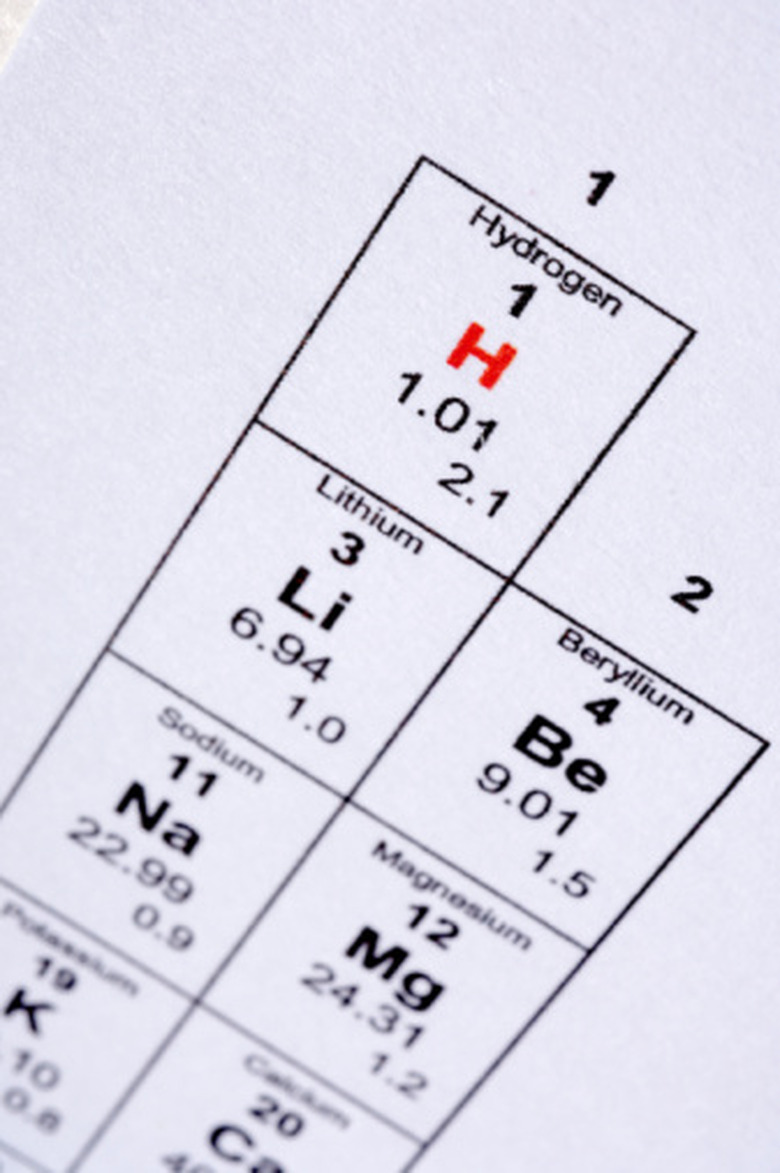How To Do Net Ionic Equations In Chemistry
A net ionic equation is a formula showing only the soluble, strong electrolytes (ions) participating in a chemical reaction. Other, non-participating "spectator" ions, unchanged throughout the reaction, are not included in the balanced equation. These types of reactions usually occur in solutions when water is the solvent. Strong electrolytes are good conductors of electricity and oftentimes completely ionize in an aqueous solution. Weak electrolytes and non-electrolytes are poor conductors of electricity and lose few or no ions in an aqueous solution — contributing very little to the ionic content of a solution. It is important to know the strong, soluble electrolytes from the periodic table to solve these equations.
Step 1
Write the general balanced equation for a reaction. This shows the initial reactants and the resultant products after reaction. For example, a reaction between calcium chloride and silver nitrate — (Ca)(Cl2)aq + (2Ag)(NO3)(2)aq — results in the products (Ca)(NO3)(2)aq and (2Ag)(Cl)s.
Step 2
Write out the total ionic equation with each chemical reactant and product written as either ions or molecules. If a chemical is a strong electrolyte, it is written as an ion. If a chemical is a weak electrolyte, it is written as a molecule. For the balanced equation (Ca)(Cl2)aq + (2Ag)(NO3)(2)aq —> (Ca)(NO3)(2)aq + (2Ag)(Cl)s, the total ionic equation is written as: (Ca)(2+) + 2Cl(-) + (2Ag)(+) + (2NO3)(-) —> Ca(2+) + (2NO3)(-) + (2Ag)(Cl)s.
Step 3
Write the net ionic equation. Each reactant losing few or no ions is a spectator and is not included in the equation. In the example equation, (Ca)(2+) + 2Cl(-) + (2Ag)(+) + (2NO3)(-) —> Ca(2+) + (2NO3)(-) + (2Ag)(Cl)s, Ca(2+) and NO(3-) do not dissolve in solution and are not part of the reaction. This is understood when you consider the two chemicals appear unchanged before and after the reaction. Therefore, the net ionic equation is (2Cl)(-)aq + (2Ag)(+)aq —> (2Ag)(Cl)s.
Cite This Article
MLA
Braybury, Luc. "How To Do Net Ionic Equations In Chemistry" sciencing.com, https://www.sciencing.com/do-net-ionic-equations-chemistry-8340023/. 24 April 2017.
APA
Braybury, Luc. (2017, April 24). How To Do Net Ionic Equations In Chemistry. sciencing.com. Retrieved from https://www.sciencing.com/do-net-ionic-equations-chemistry-8340023/
Chicago
Braybury, Luc. How To Do Net Ionic Equations In Chemistry last modified August 30, 2022. https://www.sciencing.com/do-net-ionic-equations-chemistry-8340023/
